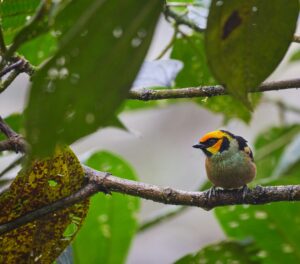Birdwatching Paradise: Discovering Avian Wonders in Rural Areas


Birdwatching is a beloved pastime for many, offering the opportunity to connect with nature and observe the beauty of avian life. While urban parks and well-known reserves often attract birdwatchers, rural areas can offer a more serene and diverse experience. These less-travelled landscapes are teeming with bird species that thrive away from the bustle of city life. Whether you’re an experienced birder or just starting, rural areas offer a paradise of birdwatching opportunities.
The Appeal of Rural Areas for Birdwatching
Rural areas present unique advantages for birdwatchers. First, they often boast less human activity, allowing birds to thrive undisturbed. The quiet surroundings provide an ideal setting for observing birds in their natural habitat. With their mix of woodlands, wetlands, and open fields, rural landscapes create a diverse environment for various species.
Unlike urban environments, rural areas are less developed, preserving native ecosystems. The less frequent human presence also means fewer disturbances, allowing birdwatchers to enjoy uninterrupted views. Moreover, these areas have fewer distractions like loud noises and crowds, making the birdwatching experience more peaceful and immersive.
Rural Habitats: A Haven for Diverse Bird Species
Rural habitats can support an impressive range of bird species. Forests, meadows, wetlands, and farmlands are just a few examples of ecosystems where birds can thrive. Each habitat attracts different types of birds, offering birdwatchers a wide array of species to observe.
Woodlands, for example, provide shelter for woodpeckers, owls, and warblers. These forested environments offer cover and nesting sites. Conversely, wetlands are ideal for waterfowl such as ducks, herons, and shorebirds. The shallow waters and abundant food supply in wetlands make them perfect environments for these species.
Farmlands and open fields attract birds like hawks, kestrels, and sparrows. These birds use the wide-open spaces to hunt for prey or forage for seeds. Rural areas with a mix of these habitats offer excellent opportunities to observe various bird species in one visit.
When to Visit: Seasons and Times of Day
The timing of your birdwatching trip can make a big difference. Different bird species are more active at specific times of the day and year. Generally, early mornings and late afternoons are the best times to catch birds in action. Birds are most active at these times, feeding and moving about before the heat of midday.
Seasonality also plays a role in birdwatching. Spring and fall are fascinating times to visit rural areas because many bird species migrate during these periods. Migrants like warblers, vireos, and swallows pass through rural regions on their way to and from breeding grounds. These migrations can offer a once-in-a-lifetime opportunity to see species you might not encounter otherwise.
Winter, though colder, can also be an excellent time for birdwatching. Many species of ducks, geese, and raptors migrate to rural areas during the winter months in search of food. In some regions, winter offers a quieter, more solitary experience. Fewer tourists and birdwatchers are out, allowing for an undisturbed observation experience.
Gear and Preparation: What You Need for a Successful Trip
To maximize your birdwatching experience, some preparation is necessary. Having the right gear will make it easier to observe and identify birds. A pair of binoculars is essential for seeing birds up close, especially when they’re far away or flying overhead. Look for binoculars that offer high magnification and a wide field of view to capture every movement.
A field guide is another valuable tool. Field guides help birdwatchers identify species and learn more about their behaviours and habitats. Many birdwatchers prefer digital guides or apps that allow quick access to identification tips and details about the birds they observe.
Additionally, a notebook or birdwatching journal is a great way to keep track of your sightings. Recording the date, location, and species you observe will enhance your birdwatching experience. You can reflect on the birds you’ve encountered over time. A camera with a zoom lens can also help capture photos of the birds you spot.
Dressing appropriately is essential as well. Weather can change quickly in rural areas, so wear layers and bring a rain jacket. Comfortable footwear is crucial in walking through rural landscapes, as you may cover long distances on uneven terrain.
Conservation and Respecting Wildlife
While rural areas provide fantastic birdwatching opportunities, respecting nature and supporting conservation efforts is crucial. Birds and their habitats are often fragile, and the impact of human presence can be significant. Always follow the “leave no trace” principles. Avoid disturbing nests, especially during breeding seasons, and do not get too close to birds. Respect wildlife by keeping a safe distance and using binoculars or a zoom lens to observe them.
Many rural birdwatching locations are home to endangered or threatened species. It’s essential to be aware of conservation programs in place to protect these birds. Supporting local conservation efforts through donations or volunteering helps preserve these areas for future generations of birdwatchers.
Birdwatchers can also help by practising ethical birding. This includes staying on designated trails and avoiding loud noises or sudden movements that could scare birds away. Never feed the birds or attempt to interact with them. These actions can disrupt their natural behaviours and make them more reliant on human intervention.
Finding Your Birdwatching Paradise
Rural areas are a treasure trove for birdwatchers, offering an escape from the stresses of city life and a chance to connect with nature. The diversity of habitats found in rural landscapes ensures that there is always something new to discover. Whether observing majestic raptors soaring in the sky or watching a family of ducks glide across a serene pond, rural birdwatching can be an enriching experience.
With careful planning, the right gear, and a respectful attitude toward wildlife, you can immerse yourself in the beauty of rural birdwatching. The next time you’re looking for an escape into nature, consider visiting a rural area and discovering the avian wonders waiting for you.
